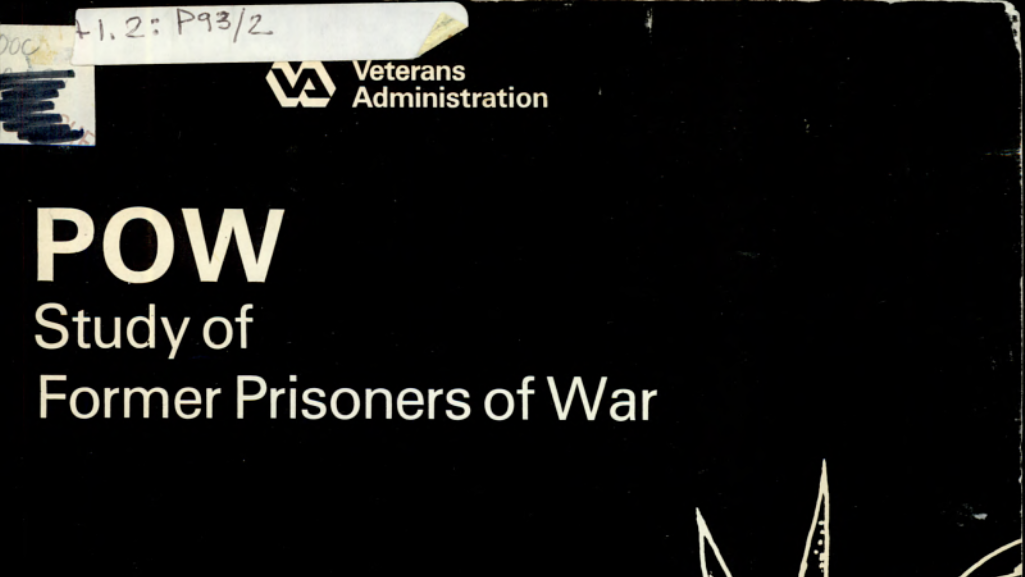National cemeteries played a role in the repatriation process for servicemembers who died outside of the United States during the two world wars. After World War II, the federal government provided their families a choice—burial in a permanent overseas cemetery, stateside national cemetery, or private cemetery with a government-issued headstone. More than 171,000 families opted for repatriation and about 20 percent were re-interred in national cemeteries between 1947 and 1951. Officially called the “Return of the Dead Program,” this effort involved logistical challenges reminiscent of wartime operations. A scrapbook created by U.S. Army Command, Alaska, provides a detailed view of how the repatriation process worked.
Based on decisions by the families of men who died in Alaska Territory—then categorized as “overseas”—approximately 126 were buried in Sitka and Fort Richardson national cemeteries. Another 1,570 were transported from Sitka to San Francisco on the Army transport Honda Knot. Elaborate services were held in both cemeteries and shipside. The Army created an album of repatriation services conducted there between May and September 1948 to record the operations. The 33-page album is made of thick cardstock and measures about 10” x 12”. Its pages contain approximately 20 black-and-white 8” x 10” photographs, along with photocopies of newspaper clippings, lists of dead buried in Alaska, and ceremonial programs. The album is the only one of its kind in the NCA History Collection and is an important artifact.
The Alaska repatriation operations mirrored those undertaken across the globe. Servicemembers buried in temporary wartime cemeteries were located, exhumed, and reburied in interim locations while families made final burial decisions. The choice was left to widows of the deceased if they had not remarried, and then to parents if there was no eligible widow. Bodies returned home from the Pacific theater went to San Francisco while those from Europe were transported to New York City. They were then loaded into special mortuary trains and shipped to regional distribution centers across the country. From there, they were given a military escort to the final burial location.

The decision on a final burial location was intensely personal. Some families wanted their loved one to rest with comrades where they died. Others chose repatriation because interment in a stateside cemetery would allow more frequent visits. The establishment of seven new national cemeteries after the First World War in more heavily populated locales made these an appealing option for many families.
View the National Cemetery Administration’s World War II 75th Commemorative Series “America’s World War II Burial Program” (PDF, 40 pages) to learn more about America’s WWII repatriation program.
By Richard Hulver, Ph.D.
Historian, National Cemetery Administration
Share this story
Related Stories
History of VA in 100 Objects
In the 19th century, the federal government left the manufacture and distribution of prosthetic limbs for disabled Veterans to private enterprise. The experience of fighting two world wars in the first half of the 20th century led to a reversal in this policy.
In the interwar era, first the Veterans Bureau and then the Veterans Administration assumed responsibility for providing replacement limbs and medical care to Veterans.
In recent decades, another federal agency, the Defense Advanced Research Project Agency (DARPA), has joined VA as a supporter of cutting-edge research into artificial limb technology. DARPA’s efforts were spurred by the spike in traumatic injuries resulting from the emergence of improvised explosive devices as the insurgent’s weapon of choice in Iraq in 2003-04.
Out of that effort came the LUKE/DEKA prosthetic limb, named after the main character from "Star Wars."
History of VA in 100 Objects
American prisoners of war from World War II, Korea, and Vietnam faced starvation, torture, forced labor, and other abuses at the hands of their captors. For those that returned home, their experiences in captivity often had long-lasting impacts on their physical and mental health. Over the decades, the U.S. government sought to address their specific needs through legislation conferring special benefits on former prisoners of war.
In 1978, five years after the United States withdrew the last of its combat troops from South Vietnam, Congress mandated VA carry out a thorough study of the disability and medical needs of former prisoners of war. In consultation with the Secretary of Defense, VA completed the study in 14 months and published its findings in early 1980. Like previous investigations in the 1950s, the study confirmed that former prisoners of war had higher rates of service-connected disabilities.
History of VA in 100 Objects
In the waning days of World War I, French sailors from three visiting allied warships marched through New York in a Liberty Loan Parade. The timing was unfortunate as the second wave of the influenza pandemic was spreading in the U.S. By January, 25 of French sailors died from the virus.
These men were later buried at the Cypress Hills National Cemetery and later a 12-foot granite cross monument, the French Cross, was dedicated in 1920 on Armistice Day. This event later influenced changes to burial laws that opened up availability of allied service members and U.S. citizens who served in foreign armies in the war against Germany and Austrian empires.







